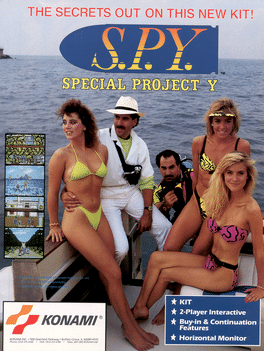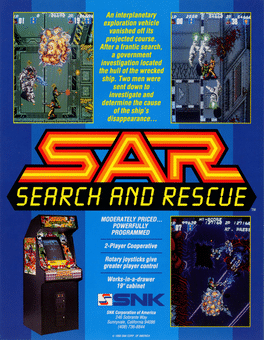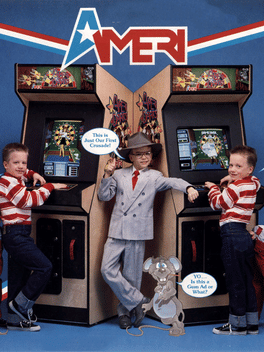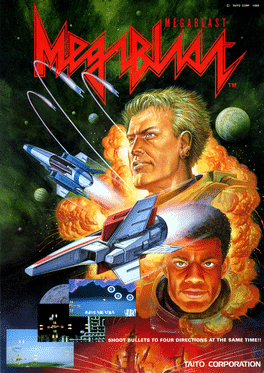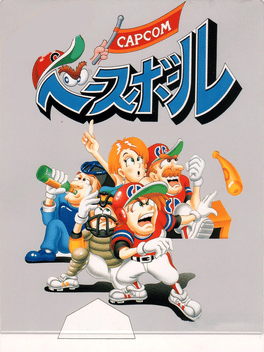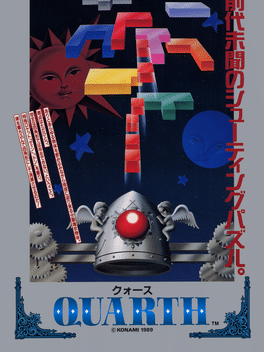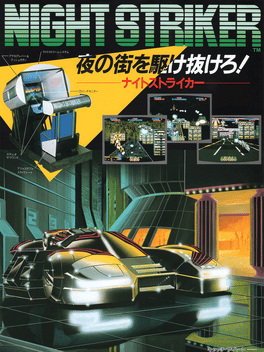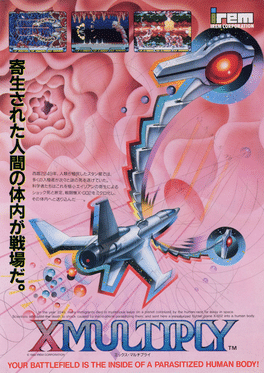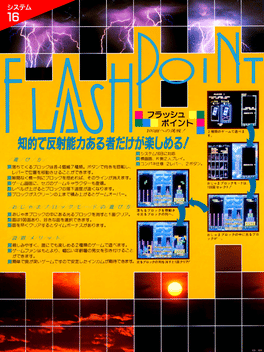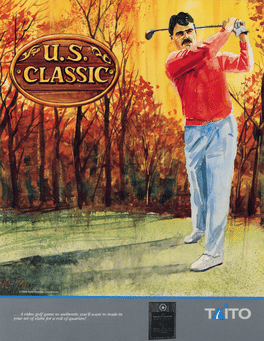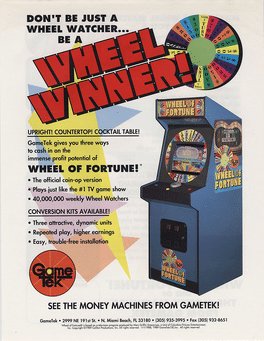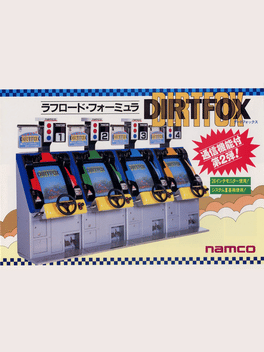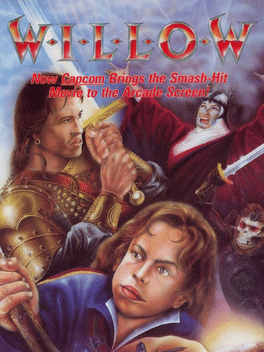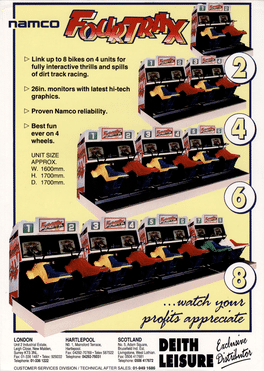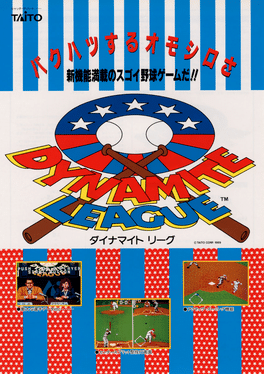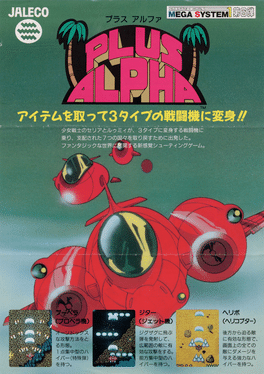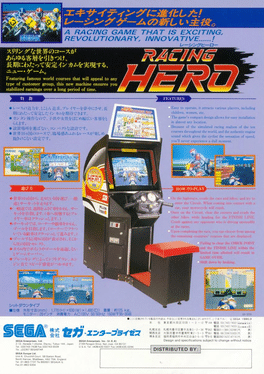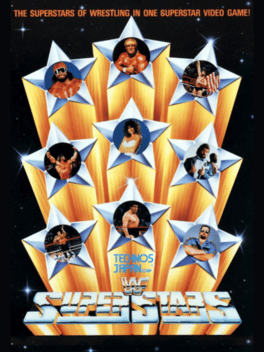New Arcade Games - Page 90
-
S.L.Y Special Project Y
1989
S.P.Y. Special Project Y is an Action game, developed and published by Konami, which was released in 1989. -
SAR: Search and Rescue
1989
When a pioneer spaceship vanishes mysteriously. An investigation reveals that the spaceship crashed near a ravine due to unknown circumstances. Now two SAR (Search and Rescue) operatives are on a mission to find out what happened, and eliminate the alien threat. -
AmeriDarts
1989
AmeriDarts
1989
Released in 1989 from Ameri, AmeriDarts is a trackball controlled darts game featuring Shootout, Flash, 301, High Score and Cricket variations. -
Megablast
1989
Megablast
1989
Megablast (メガブラスト) is a 1989 Horizontal scrolling shooter arcade game released by Taito in Europe and Japan. One or two players could control space fighters assigned to deal with an alien invasion using incredible firepower through eight stages. The game is somewhat parodical as many of the game’s mini-bosses resemble previous Taito game characters and the ending theme consists of a Beethoven song. In the future, Earth has achieved a state of global peace, but one problem has arisen: a wholesale disappearance of young women. A top-secret planetary protection organization investigates the strange disappearances and discovers that the women are being abducted by aliens. The aliens hail from the planet Zancs, where a rampant disease has sterilized the entire female population. Unable to mate with their own kind, the people of Zancs have found the perfect reproductive substitutes in the women of Earth, abducting them to keep the planetary population steady. Two fighter pilots - Downson and Bogey - a -
Capcom baseball
1989
Capcom baseball
1989
Capcom Baseball is a baseball arcade game created by Capcom in 1989. It was only released in Japan. -
Block Hole
1989
Block Hole
1989
Block Hole is a combination of Tetris-style gameplay and a fixed shooter in the Space Invaders tradition. The player's focus is on falling blocks, and the action is geometrical. Rather than arranging the blocks together to make a row of disappearing blocks, a spaceship positioned at the bottom of the screen shoots blocks upwards to make the falling block pattern into squares or rectangles. Once the blocks have been arranged properly, the shape is destroyed and the player is awarded points based on the shape's size. The blocks continue to drop from the top of the screen in various incomplete shapes. As each level progresses, the blocks drop at greater speed and frequency. There are also various power-ups which could be located to increase your ship's speed, among other bonuses. The game continues until the blocks reach the dotted line at the bottom of the screen, whereupon the player's ship is "quarthed," crushed flat. -
Night Striker
1989
Night Striker
1989
Night Striker (ナイトストライカー) is an arcade game developed by Taito. It is a futuristic on-the-rails shooter which plays similarly to Sega's Space Harrier, though has you pilot a hover vehicle instead. The game was brought to the Sega Mega-CD in 1993, where graphically it was downscaled for the weaker hardware. It was also brought to the Sega Saturn as Night Striker S (ナイトストライカーS) in 1996 - essentially the same game, but with an extra "Saturn Mode" and a few small enhancements. No versions have ever left Japan. -
X Multiply
1989
X Multiply
1989
Is a side-scrolling shooter published by Irem, and similar in style to their earlier R-Type. The game centers around an unusual alien invasion against a colony planet in the year 2249 where the aliens themselves are microscopic creatures that invade, infect, and kill the colonists. Scientists have deployed the microscopic fighter X-002 into the body of the hapless woman whose body has been invaded by the alien queen. -
Sky Robo
1989
-
Flash Point
1989
Flash Point
1989
Flash Point is a variant of Tetris, with the various shapes of the tetrominos and their rotation are identical to Sega's Tetris . What makes the game different from a standard Tetris clone is its objective; each stage already contains a pattern of blocks, usually arranged as symbols, characters, or other images. Among these blocks are several bombs. The goal is to make these bombs detonate by clearing out the rows they are in. Once all the bombs have been detonated, the stage "explodes", and the player advances to the next one. -
Twin Falcons
1989
-
U.S. Classic
1989
U.S. Classic
1989
A basic golf game that starts with a view from the tee that shows wind velocity, direction and distance to the green. Choose your club and swing by rolling the track-ball with the desired force and direction. Extra holes given for par and under par. -
Wheel of Fortune
1989
Wheel of Fortune
1989
If the wheel lands on any given amount, say $1000, and if you guess the correct consonant in any given puzzle in rounds 1-3, you win the $1000. Furthermore, if there is more than one consonant in the puzzle, your $1000 will be multiplied (e.g. four R's in a puzzle awards you with $4000). Each vowel you buy will cost you $250, however, you will not lose more than $250 even if there is more than one single vowel in a puzzle (e.g. if there are three A's in a puzzle you will not lose $750). But you will still lose $250 if you guess a vowel incorrectly. If the wheel lands on "Bankrupt" you will lose all your money (however, the money you carried over from round 1 will not be lost). If the wheel lands on "Lose a Turn," the turn goes to the other contestant. If the wheel lands on "Free Spin," you can spin again. This option is one way to keep you in the lead. -
Dirt Fox
1989
Dirt Fox
1989
Dirt Fox is a racing arcade video game by Namco. Up to four linked cabinets let players race simultaneously across six timed track sections, alongside CPU-controlled rivals. Falling behind the time limit eliminates a player, while others continue until the finish. It was released only in Japan. -
Willow
1989
-
Four Trax
1989
-
Dynamite League
1989
-
Plus Alpha
1989
-
Racing Hero
1989
Racing Hero
1989
Race a motorcycle against other bikes, cars, trucks and the obligatory tight time limit. Racing Hero is the spiritual successor both to Sega's wonderful "Hang-On" series, and to their most famous racing game, "Out Run". Some of Racing Hero's stages mirrored the racing-through-traffic gameplay of the Ferrari-based racer, for example perhaps the biggest similarity to Out Run is that at the end of each stage, the player can choose which route he or she wishes to take next. This differs somewhat from "Out Run"'s highly impressive forked-road method. In Racing Hero, the player is presented with a seperate stage-select screen and simply highlights the flag of whichever country they wish to tackle next. -
WWF Superstars
1989
WWF Superstars
1989
star 6.9WWF Superstars is an arcade game manufactured by Technōs Japan and released in 1989. It is the first WWF arcade game to be released. A series of unrelated games with the same title were released by LJN for the original Game Boy. Technōs followed the game with the release of WWF WrestleFest in 1991.
